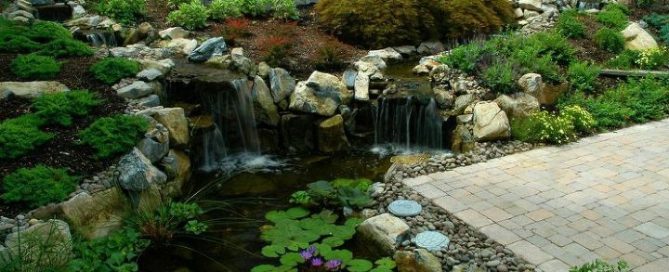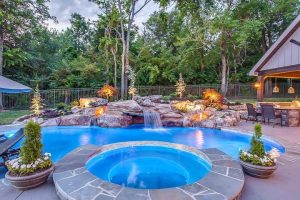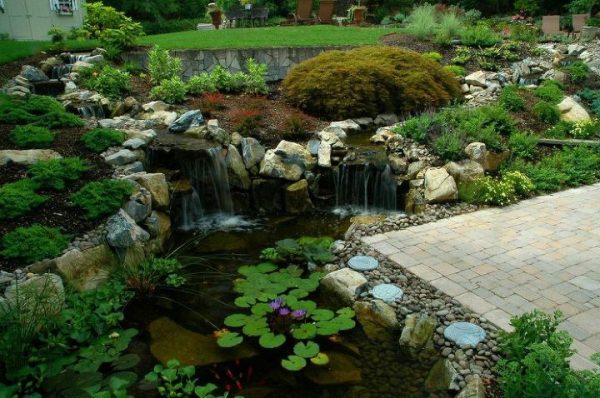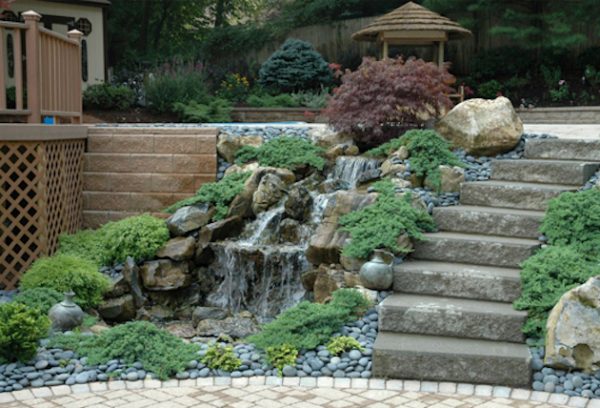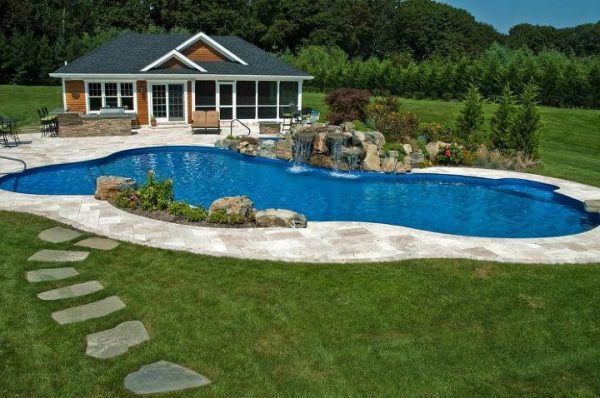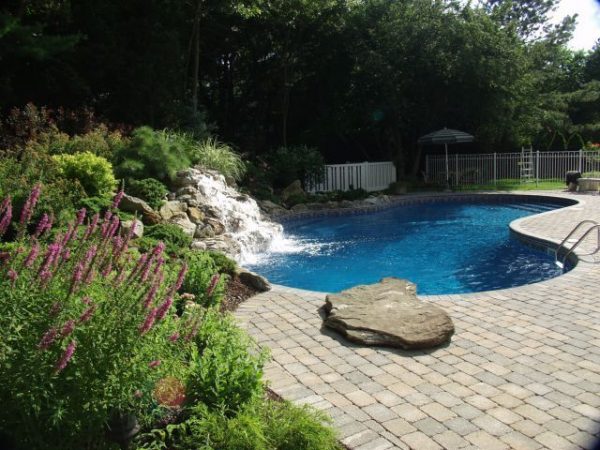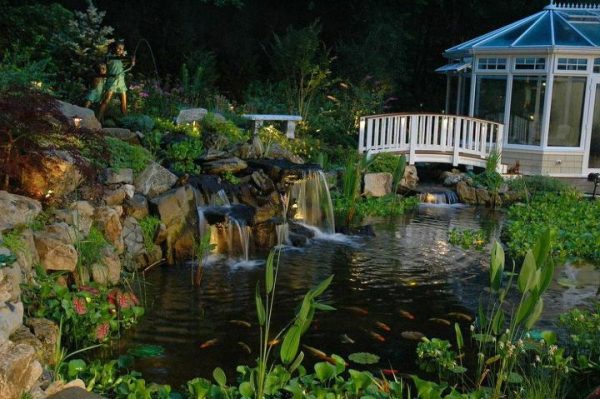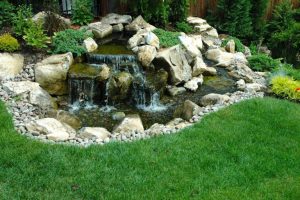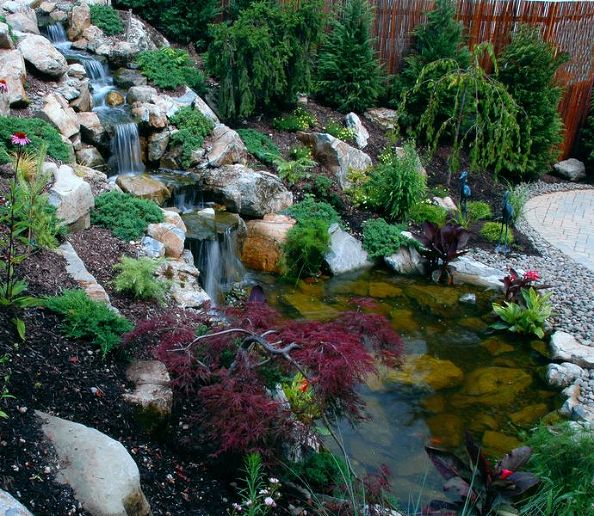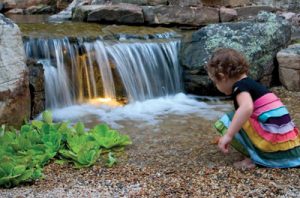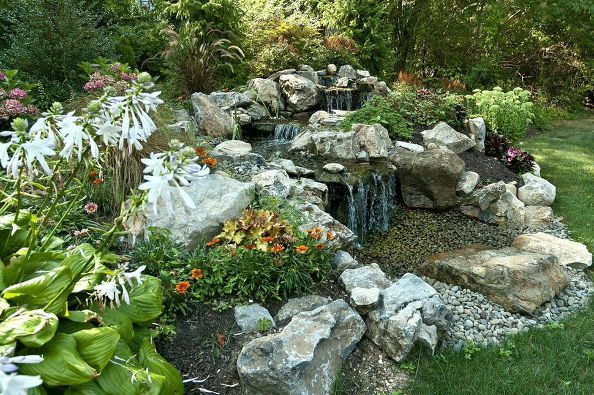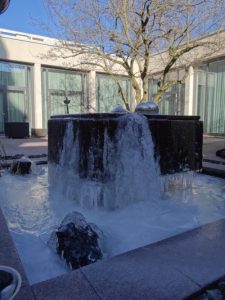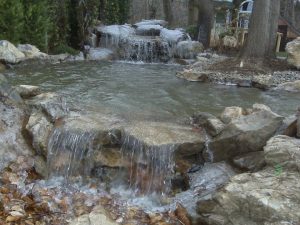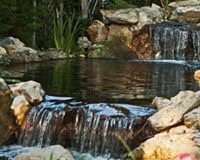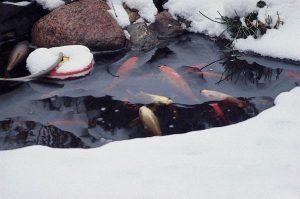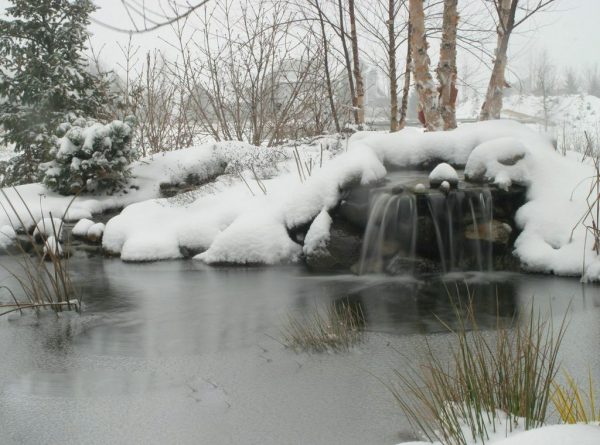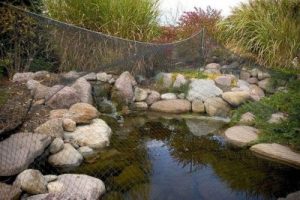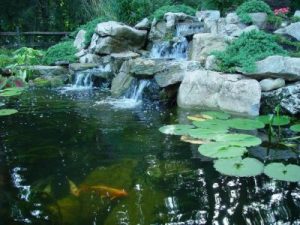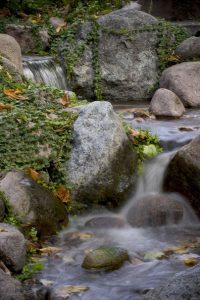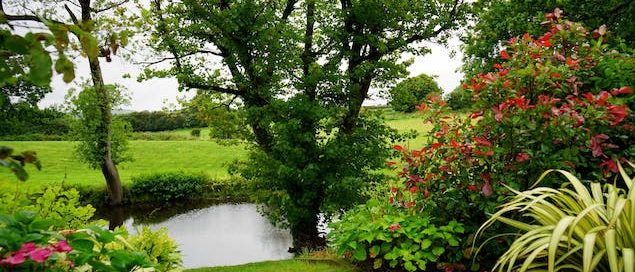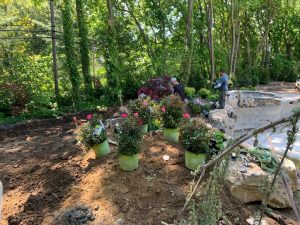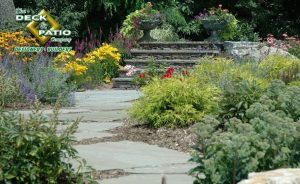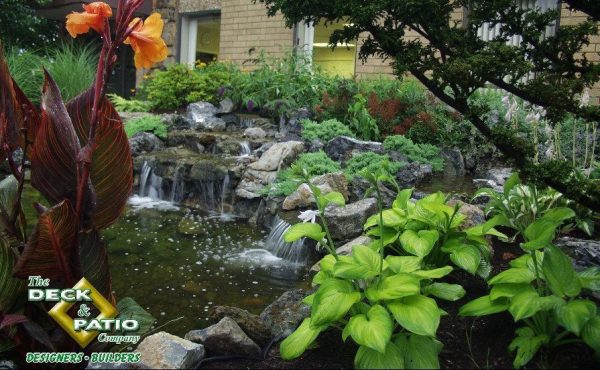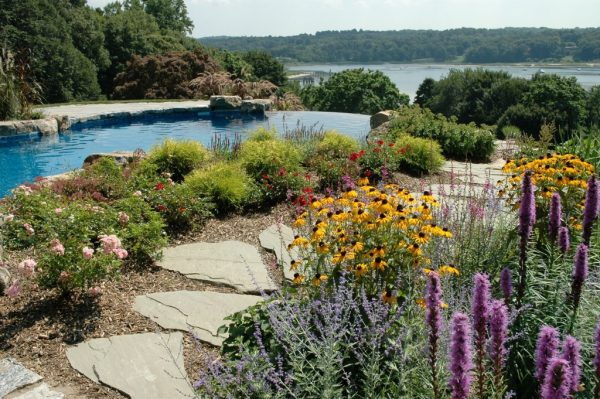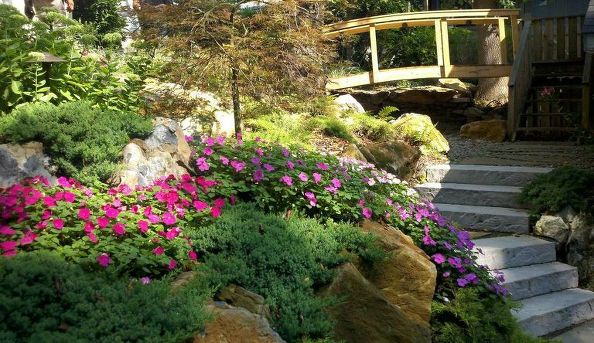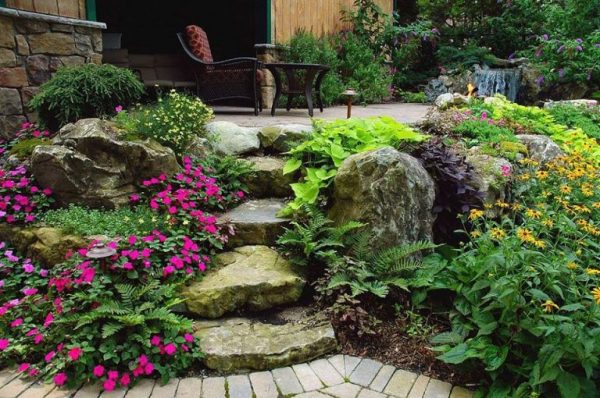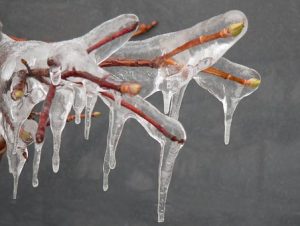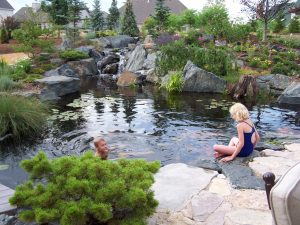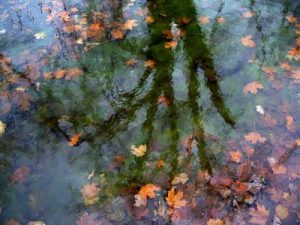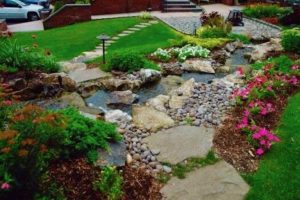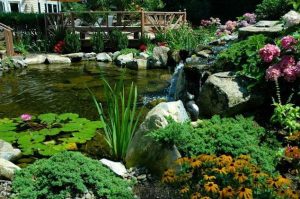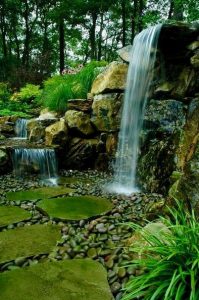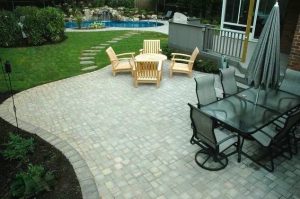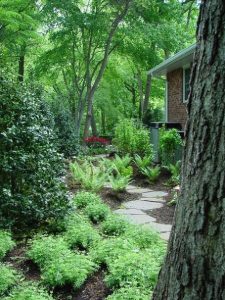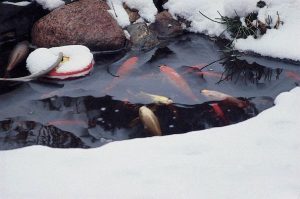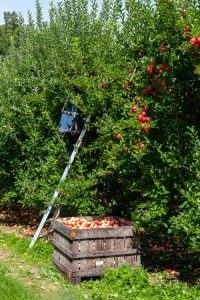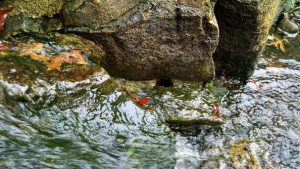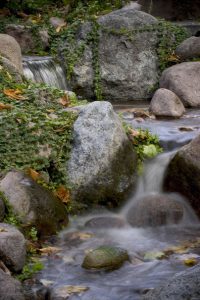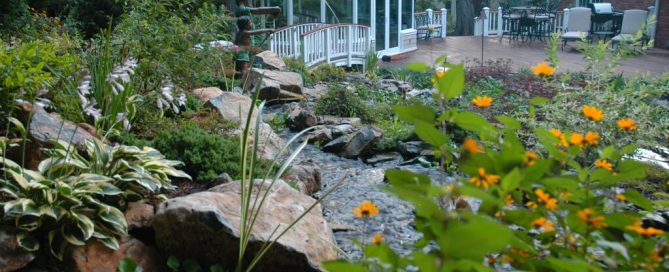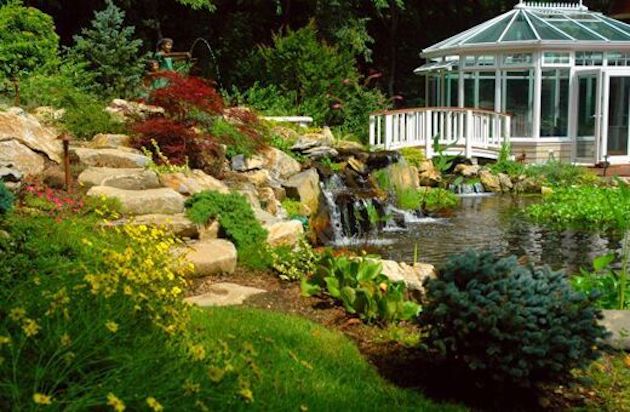Landscaping: How to Create ‘Soft’ Space Using ‘Hard’ Rocks
It may seem like a contradiction, but Deck and Patio landscape designers are known for creating soft effects in backyard landscapes through our expertise in using hard rocks — boulders, stone, and even man made wet-cast concrete.
If you think about it, rocks being a natural part of nature, if chosen well and positioned perfectly, they can make a man-made waterfall, for example, appear as if it’s flowing from a natural mountain stream.
Such natural-looking water features have won for Deck and Patio many local, national and international awards for our Long Island water features.
In fact, one of our dramatic pool water features drew the attention of Peek Pools several years ago, when they were developing a special project for the DIY Network.
After seeing our work, they got in touch and invited us down to Tennessee to do the first of two water features (left) for a pool in that state and, later, one in Kentucky — all of which have aired on television.
In the first example of our work below, you’ll see that rocks, in all sizes, textures and shapes can be far more than an aesthetic choice.
The above Deck and Patio man-made pond with waterfalls and stream not only looks natural and beautiful but enjoys a healthy ecosystem. Note: It is essential to choose the right stones and gravel for your pond to provide the correct ph value for the fish and plants and also reduce algae.
The whole design includes a handsome paver patio that ends next to river rock and a lush pond landscape with stream, plantings, and natural paths.
On a smaller scale, we created a waterfall to offer a bit of pizzazz to what could have been a boring retaining wall area.
Installing the above pondless water feature — yes, pondless — means that the water is underground and in a safe area where children can’t access it.
We built this waterfall, incorporating moss rocks and Mexican beach pebbles, when we were renovating their backyard pool area. The waterfall includes procumbent junipers and dwarf cypress along the edges to soften the hardness of the boulders and retaining wall.
When You Can Go Big
For the following project, we were building an 800-square-foot pool house for the clients.
Along with a lovely 50-foot-long and 26-foot-wide pool, we added a spillover spa, separate waterfalls, surrounded by an elegant Travertine patio.
Again, in this project there is a lot of stone. But set around a huge water feature — a pool — with waterfalls and a separate spillover spa with colorful plantings creates a softscape.
Lush Landscaping Needs Rocks!
For our last example today, you can see how colorful plantings and waterfalls are enhanced by stone and rocks.
Set against lush landscaping and a beautiful man-made waterfall, a dramatic diving rock and paving stone patio feel like they’ve come about organically.

